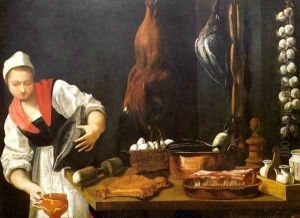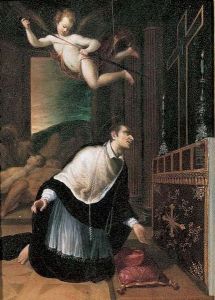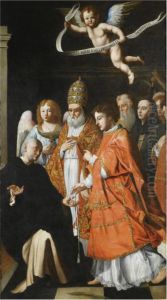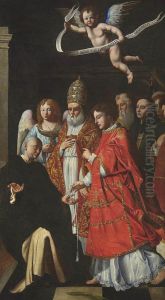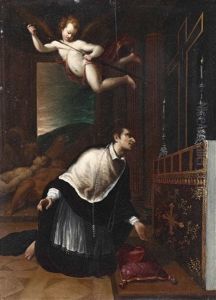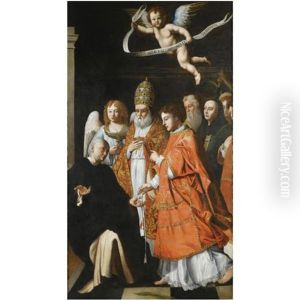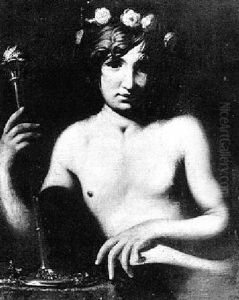Andrea Commodi Paintings
Andrea Commodi was an Italian painter of the late Renaissance period, born in 1560 in Florence, Italy. He is often considered part of the transition from the Renaissance to the Baroque era. Commodi's life was marked by his dedication to art and his contributions to the development of painting in Italy during a time of significant cultural change.
Commodi received his artistic training in Florence, where he studied under the Mannerist painter Santi di Tito. His style, though initially influenced by his teacher, evolved over time as he incorporated elements of naturalism and realism into his work. This stylistic evolution reflected the broader shift occurring in the art world as it moved away from the stylized forms of Mannerism towards the more dynamic and emotionally resonant styles of the Baroque period.
Throughout his career, Commodi worked on various commissions, including religious and mythological scenes, which were popular among patrons of the arts during the late 16th and early 17th centuries. He was known for his ability to capture the human form with a certain sensitivity and attention to anatomical detail. Despite his talent, he did not achieve the same level of fame as some of his contemporaries, such as Caravaggio or Peter Paul Rubens. However, his work was respected by his peers and had a lasting impact on the Florentine artistic community.
Andrea Commodi's exact date of death is not well documented but is believed to be in 1638. His legacy is preserved through the works he left behind, which can be found in various churches and museums throughout Italy. Commodi’s contributions to the art world continue to be studied and appreciated for their reflection of the aesthetic transitions of his time and for their inherent artistic quality.
